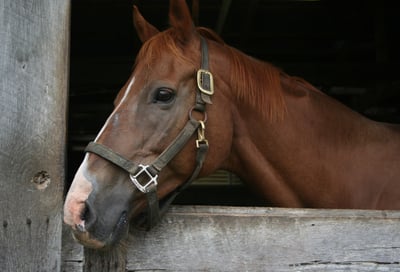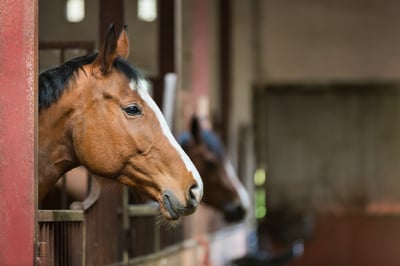Floyd Fain
June 21, 2017 Horse owners will stop at nothing to keep their horses healthy, happy and safe. Unfortunately, horses are highly susceptible to respiratory disease.
Horse owners will stop at nothing to keep their horses healthy, happy and safe. Unfortunately, horses are highly susceptible to respiratory disease.
If you are proactive and take the appropriate preventive measures, you can significantly reduce the odds of your horses being saddled with this malady.
The Prevention Process
There are three steps to preventing respiratory disease in horses. The process begins with giving your horse a vaccination against common respiratory diseases like equine rhinopneumonitis virus and equine influenza. If you're taking your horse out of the state, you should get him vaccinated a couple of weeks in advance.
A booster vaccination will improve your horses' immune systems, providing the extra protection necessary to keep them disease-free. Talk to your vet to find out if there are additional vaccinations that will help.
Minimize Exposure
The second component of the respiratory disease strategy is to prevent horse exposure to bacteria and viruses. The majority of respiratory diseases are actually social diseases transmitted through horse contact, coughing and the sharing of items like feed buckets. Minimize the exposure to diseases by thoroughly cleaning and disinfecting horse stalls before letting your horses in those areas.

If the horse that previously occupied the stall was sick, chances are it will leave behind contagious agents. Though you can't eliminate all the germs from stalls and other materials, a thorough disinfecting will certainly help. Be sure to vacuum up dirt and dust from the stall, nearby walls, the floor and door. Add on a PVC pipe for an extension to reach those hard-to-access spaces.
Coat the stall, latches, buckets and other surfaces with a disinfectant. Use a stiff brush to reach far-away areas. The best type of disinfectant has chlorhexadine. Give the stall ample time to air dry before you re-bed the space.
If there is a smell of ammonia resulting from urine, add a thin coating of agricultural lime to the floor prior to re-bedding. This coating will minimize the urine odor and prevent the growth of bacteria. Just make sure enough bedding is used so the horse doesn't come in direct contact with the lime. Agricultural lime has the potential to burn your horse's skin.
Key In On Ventilation
The final component to preventing respiratory disease in your horses is to ventilate your horse stalls, especially at shows.
The barn should have a minimum of eight to 10 air exchanges each hour. The building's air must be replaced every seven minutes. Adequate air movement is approximately two miles per hour. This level of air movement feels like a soft breeze.
The majority of horse show stalls have considerable ceiling height so stagnant air can rise. Yet most shows lack sufficient open windows and doors to provide the necessary amount of air circulation. Air should arrive by way of open doors and windows then exit through roof vents.
If it's impossible to reserve stalls by doors or windows that aren't permanently shut, set up some fans. Put them on a low speed to provide your horses with much-needed air circulation.
Showing your horse soon? Download our free whitepaper to see five things you should know about arena footing.

